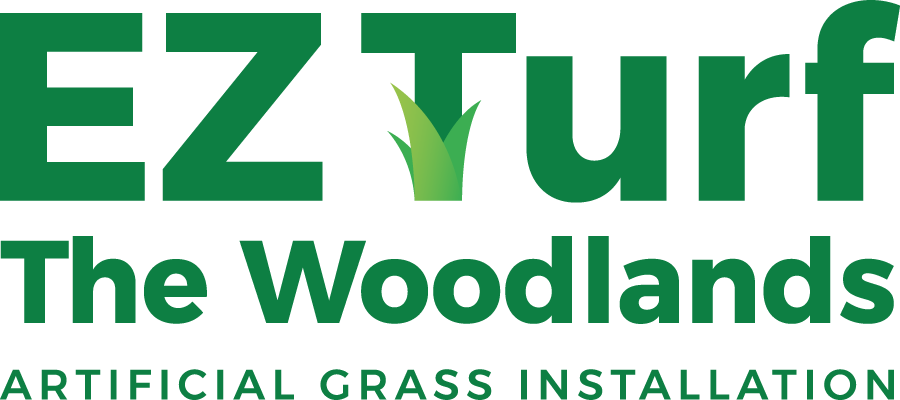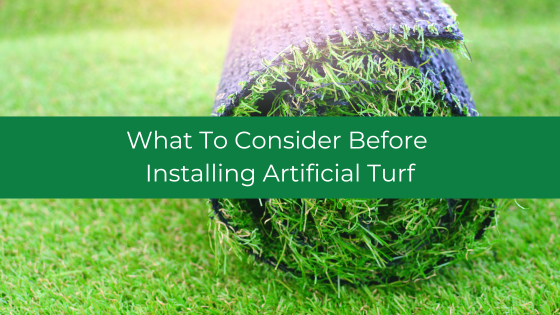Artificial turf saves water, time and money for property owners, but there are some important things to consider before installing artificial turf, including:
- How will the turf be used?
- Where will it be installed?
- How complicated is the installation?
- What site preparation will be needed?
Artificial grass projects typically require considerable site and material preparation – skills that professional turf installers in The Woodlands bring to every job. The turf professionals bring experience and knowledge to the job, and they also know what factors to consider before installing artificial turf.
Consideration 1) What the artificial turf will be used for?
Synthetic grasses are selected based on several criteria – appearance, bounce and feel characteristics, material composition, and the surrounding landscape are some examples. Another important consideration is how much foot traffic the artificial grass will regularly receive.
Some synthetic grasses are built for high-traffic areas, such as golf courses, playgrounds, or other public areas. Artificial turf is made to withstand constant use while maintaining its shape and rigidity. Some turfs are better suited for residential settings, where lower volumes of foot traffic are expected. They are plenty durable and can withstand years of use but may provide the aesthetic or feel that a homeowner wants from their turf.
Many property owners choose synthetic grass for a dog run, and they are especially popular at apartment complexes. There are turf products available that can serve this purpose perfectly, and an artificial grass expert can source them for property owners.
Consideration 2) Where the synthetic grass will be installed?
One of turf’s primary advantages is its versatility. Synthetic grass can be shaped to fit just about any space, from sprawling golf greens to ultra-compact high-rise balconies. Because it requires zero sun, water, and soil to survive, turf can be used anywhere.
It is important to consider where the turf is going to be installed. Larger projects typically require significant site preparation, and the best approach to this is hiring a professional turf installer.
Another example – if your turf is going to be in a public place where children may be present (think playgrounds or athletic fields), additional shock absorption padding can protect against injuries. Prior to every turf installation, consider who is most likely to use the surface and ensure it’s designed to their needs.
Consideration 3) How much shaping and cutting the artificial turf will require?
Artificial grass can be shaped in endless ways, including complex curves and geometric patterns. The goal for most turf installations is to leave a natural-like finish that fits the property’s existing landscaping.
To do this, the turf will need to be extensively shaped and cut to fit. Depending on the nature of your project, this may require extreme precision to ensure there are no visible seams or edges. If your project involves challenging angles or curves, it’s highly recommended that an experienced turf installer in The Woodlands manage the process. Expert turf installers have the tools and techniques required to make clean, precise cuts, so they leave every project with a look that only the professionals can provide.
Consideration 4) How your artificial turf will drain during a heavy rain storm?
Artificial turf is prized for its drainage efficiency, and some synthetic grasses can drain more than 30 inches of rainfall an hour. However, this drainage efficiency is only possible if the project site is properly prepared. Even for residential turf projects, some level of dirt work is typically needed. This may include removing existing vegetation, stripping the topsoil, grading the project site, and compacting the base. These site prep steps are essential to guarantee long-term durability for your artificial grass.
Site preparation is also essential for drainage purposes. Although the turf is porous and will permit water to pass through, if that runoff has nowhere to go once it passes through the turf, it will still flood the property. This is another area where the turf installation professionals can provide value. Prior to placing the turf, they will grade the site and install any drainage structures necessary to ensure the grass doesn’t flood. This will ensure your turf is ready for whatever Houston weather pops up.
Consideration 5) If weeds will be a problem around the synthetic grass
Another common problem for synthetic grasses is weeds. If they are allowed to take root around the turf, they can eventually grow under and through it. This not only damages the artificial turf but may cause it to shift out of place and compromise its appearance.
Weeds can be addressed as long as the right precautions are taken. This starts with clearing any and all vegetation around the turf’s perimeter, down to the roots, which is a process known as grubbing. Once the weeds are gone, artificial turf installers will lay down a weed barrier that sits under the turf, and right on top of the soil. This barrier prevents weeds from growing through the synthetic grass, ensuring they do not affect the turf’s positioning or durability.
Consider Working with a Professional Turf Installer in The Woodlands for Ideal Results
Ask yourself the above questions before moving forward with your artificial turf project, and if you are still unsure what synthetic grass makes sense for your project, an experienced turf installer in The Woodlands can provide valuable insight and expert installation services. The turf professionals consider every possible concern before laying down turf – including preparing the installation site, ensuring adequate drainage, laying down the right combination of turf and underlayment materials, and leaving a clean, spotless finish.
- What Are The Benefits of Gym Turf for Workouts? - December 10, 2025
- How Do I Choose a Commercial Artificial Grass Installer? - November 11, 2025
- Choosing The Right Turf For My Playground Area - October 23, 2025

